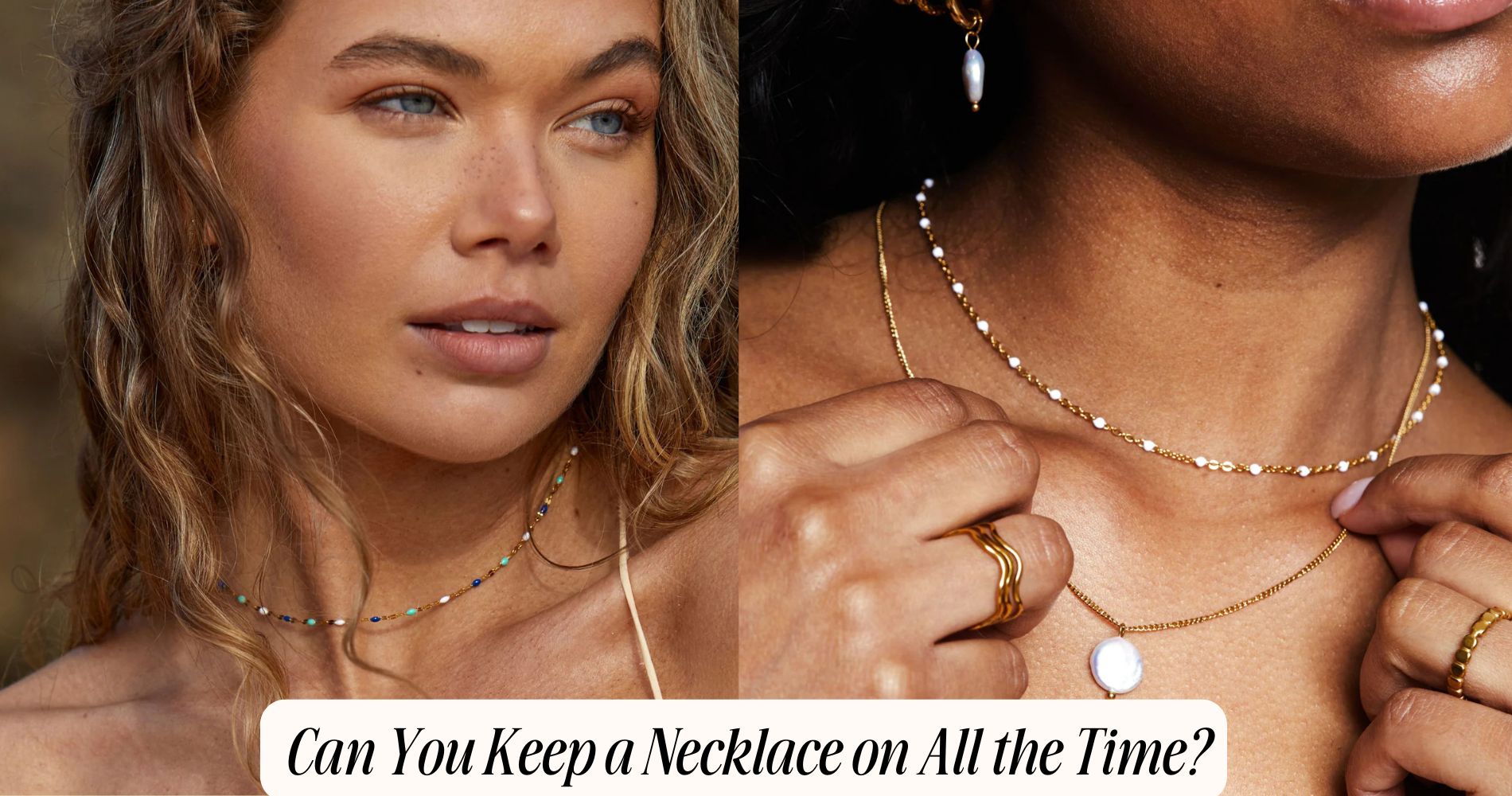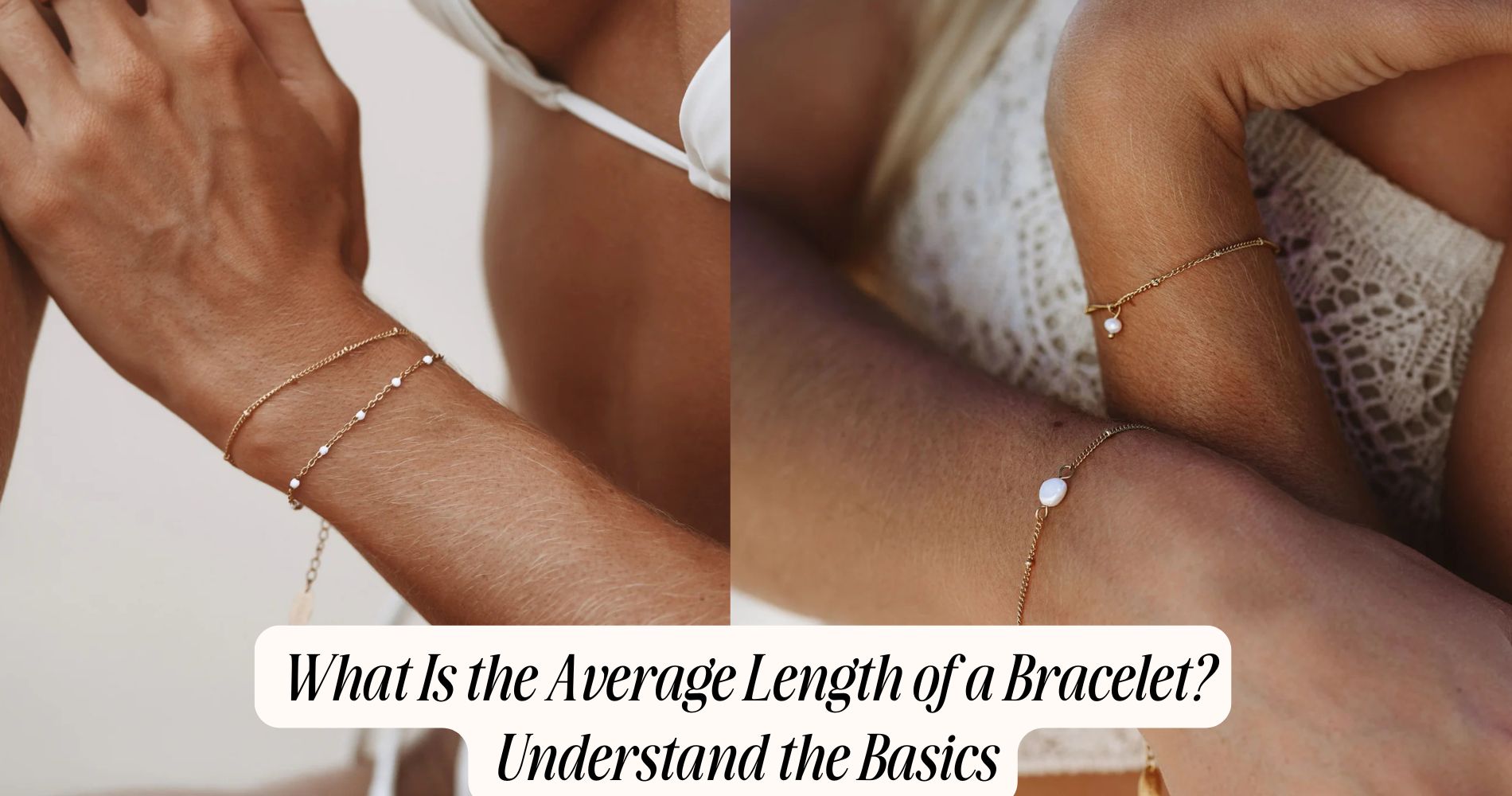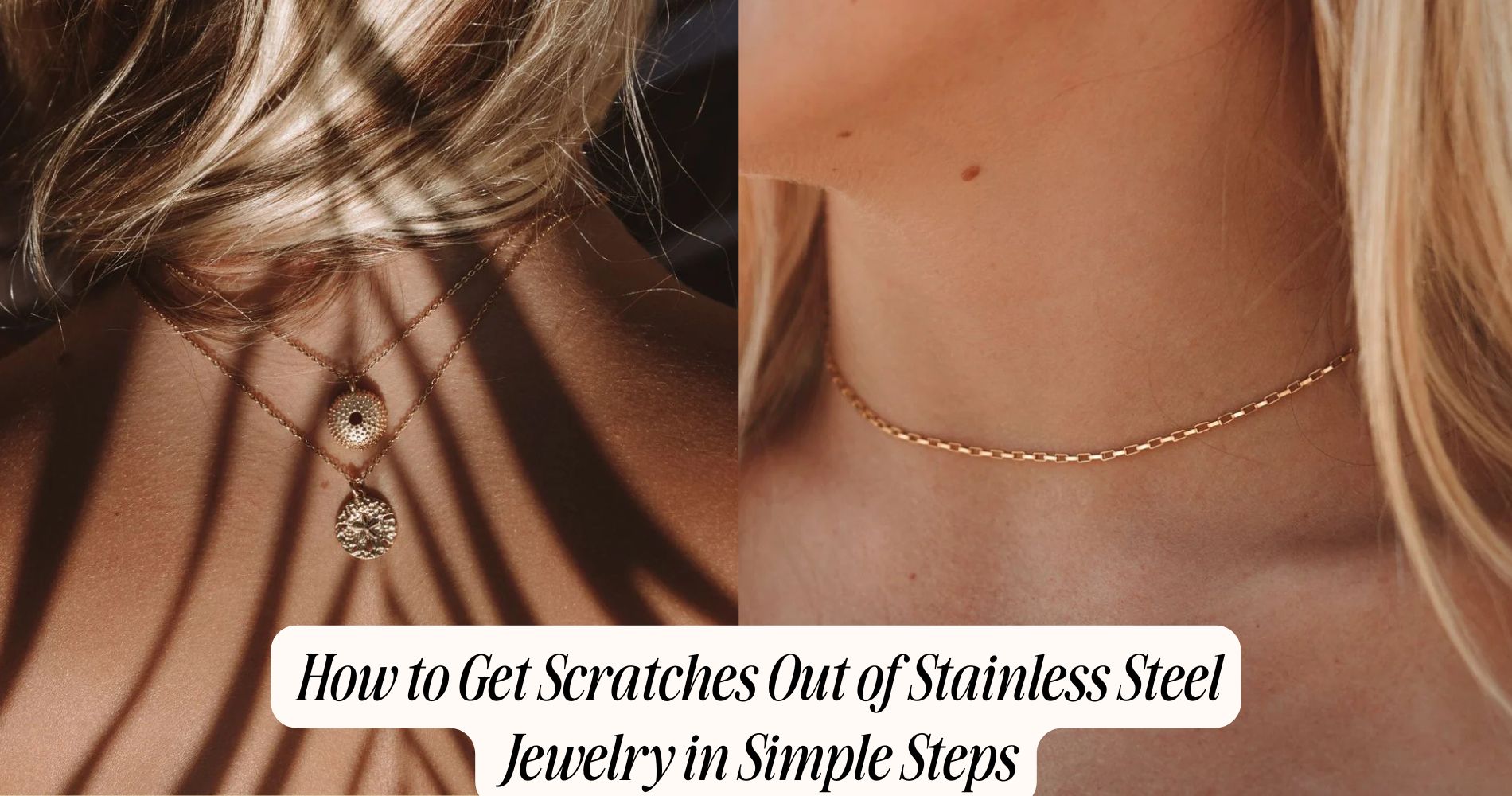
Can You Keep a Necklace on All the Time?
Can you keep a necklace on all the time? Absolutely—especially if it's crafted from durable materials like stainless steel or gold alloys. However, comfort plays a crucial role, as constant wear can sometimes irritate the skin. Activities like swimming or exercising may also increase the risk of irritation, so it’s important to monitor how your skin reacts. While it’s generally a good idea to remove your necklace during showers to avoid damage from soap and water, finding the perfect balance between style and comfort ensures your jewelry remains a part of your everyday look. For versatile and durable options, explore our stunning Greek Necklaces collection.
Benefits of Wearing a Necklace Constantly
Wearing a necklace constantly can enhance your sense of identity and style. It serves as a powerful fashion statement, showcasing your personality and aesthetic preferences. Whether you choose a minimalist chain or a bold, chunky piece, your necklace reflects who you're and how you want the world to perceive you.
When you wear a necklace every day, it becomes more than just an accessory; it transforms into a form of personal expression. Each time you glance in the mirror, you're reminded of the unique qualities that define you. It can evoke memories of special occasions or symbolize important relationships, adding depth to your daily attire.
Moreover, a necklace can easily elevate even the simplest outfits, making them feel more intentional and put together. It draws attention to your neckline and face, enhancing your overall appearance.
Over time, you may find that you develop a signature style centered around your favorite pieces, making them an integral part of your identity.
Embracing a necklace as a daily staple can help you cultivate confidence and authenticity, allowing you to express yourself boldly in every situation.
Potential Risks of All-Day Wear
While many enjoy the aesthetic appeal of a necklace worn all day, several potential risks come with this habit. One significant concern is necklace tangling. When you wear a necklace continuously, it can easily tangle with your hair, clothing, or even other jewelry, leading to frustration and potential damage to the piece itself. You might find yourself spending time trying to untangle a mess that could've been avoided.
Additionally, skin irritation is a common issue for those who keep their necklaces on all the time. Constant friction between the necklace and your skin can result in redness, rashes, or allergic reactions, especially if your skin is sensitive. If you notice any discomfort or irritation, it's vital to take the necklace off and give your skin a break.
Moreover, certain activities like exercising, showering, or swimming can exacerbate these risks, as sweat and moisture may contribute to the irritation.
Being mindful of these potential downsides can help you enjoy your jewelry without compromising your skin's health or the necklace's integrity. Remember, moderation is key when it comes to all-day wear.
Necklace Materials and Durability
When you choose a necklace to wear all the time, understanding the materials is essential for durability.
Different metals have varying strengths, and gemstones can vary in resilience based on their composition.
Knowing how to care for your jewelry will also help maintain its beauty and longevity.
Metal Types Explained
Choosing the right metal for your necklace can make all the difference in how well it withstands daily wear. When it comes to durability, gold alloys and stainless steel are popular choices.
Gold alloys, which combine pure gold with other metals, offer a balance of beauty and strength. For example, 14k or 18k gold contains a mix of gold and metals like copper or silver, enhancing its resistance to scratches and tarnish while maintaining its luxurious appearance.
On the other hand, stainless steel is a robust option known for its exceptional durability. It's resistant to rust, corrosion, and tarnishing, making it ideal for daily wear, especially if you sweat or expose your jewelry to moisture.
Plus, it's lightweight and hypoallergenic, catering to those with sensitive skin.
Whether you're drawn to the classic elegance of gold or the modern appeal of stainless steel, understanding these materials will help you make an informed decision.
Both options can beautifully enhance your style while ensuring your necklace can keep up with your active lifestyle. So, consider these metal types carefully to find the perfect fit for your everyday wear.
Gemstone Resilience Factors
Understanding the resilience of gemstones is essential for selecting a necklace that can withstand everyday wear. When you're choosing a gemstone, consider its hardness on the Mohs scale, which measures how resistant it's to scratches. For instance, diamonds score a perfect 10, making them incredibly durable, while softer stones like turquoise, which only score a 5-6, may not hold up as well under daily use.
Durability factors also include the gemstone's toughness, which refers to its ability to resist breaking or chipping. Some gems, like sapphires and rubies, are both hard and tough, making them ideal for necklaces worn all the time.
On the other hand, certain stones like opal or pearl, while stunning, are more prone to damage and may require extra care.
Additionally, consider factors such as heat sensitivity and chemical resistance; some gemstones can be easily affected by household products.
Care and Maintenance Tips
Caring for your necklace not only preserves its beauty but also extends its lifespan, especially when you wear it daily. Different materials require specific cleaning techniques to maintain their shine. For metal necklaces, a gentle polish with a microfiber cloth can remove tarnish and restore luster.
If your necklace features gemstones, use a soft brush and mild soap solution to clean them, guaranteeing you avoid harsh chemicals that could damage their surface.
When it comes to storage solutions, keep your necklace in a dry, cool place, ideally in a fabric-lined jewelry box or a soft pouch. This prevents scratches and tangles.
If you have multiple pieces, consider using a necklace organizer or individual compartments to keep them separated. Avoid hanging your necklace on hooks, as this could lead to kinks or breaks.
Regularly inspect your necklace for any signs of wear, such as loose clasps or fraying chains. Addressing these issues promptly can save you from more significant repairs down the line.
Lifestyle Considerations
Many people find that wearing a necklace constantly can enhance their personal style and make a statement about their identity. However, it's crucial to reflect on how your daily routines might affect your comfort and the longevity of your favorite piece.
For instance, if you lead an active lifestyle or frequently engage in physical activities, a delicate necklace mightn't withstand the wear and tear. You might prefer a sturdier design that complements your routine while still reflecting your unique style.
Personal preferences also play a significant role in your decision to keep a necklace on all the time. Some people feel more comfortable with jewelry that feels like a second skin, while others may find it cumbersome during specific tasks or while sleeping.
Think about your daily activities: if you work at a desk, a simple chain might be perfect, but if you're constantly on the move, you might want to choose something that won't get in the way.
Ultimately, it's about finding the right balance between style and practicality. Take the time to assess your lifestyle and wear what feels best for you.
Skin Reactions and Allergies
Wearing a necklace all the time can sometimes lead to unexpected skin reactions or allergies, which mightn't be immediately apparent.
You might notice skin irritation, such as redness, itching, or rashes, especially in areas where the necklace sits against your skin. These reactions can be triggered by various factors, including the materials used in the necklace.
For instance, if your necklace contains nickel or other metals, your skin may react negatively.
Even high-quality metals can cause issues if your skin is sensitive or if you wear the necklace in damp conditions, like during workouts or showers.
Allergic reactions can develop over time, so even if you've worn a necklace for years without issue, it doesn't mean it's safe forever.
If you notice any discomfort, it's important to remove the necklace immediately to prevent further irritation.
If you suspect an allergy, consider consulting a dermatologist.
They can help identify the specific cause and suggest alternatives.
Being aware of how your skin reacts to prolonged exposure can help you enjoy your jewelry without compromising your skin's health.
Maintenance and Care Tips
Your necklace deserves proper maintenance to keep it looking its best and to guarantee it remains comfortable against your skin.
Regular cleaning techniques are essential, especially if you wear it daily. Use a soft cloth to gently wipe down the surface and remove any oils or dirt. For deeper cleaning, consider a mild soap solution. Soak the necklace briefly and then rinse thoroughly, making sure no soap residue lingers.
When it comes to storage solutions, avoid tossing your necklace in a drawer where it can get tangled or scratched. Instead, hang it on a dedicated jewelry holder or store it in a soft pouch. If your necklace has gemstones, consider using a jewelry box with individual compartments to prevent damage.
Also, keep your necklace away from harsh chemicals, like those found in cleaning products or perfumes, as they can tarnish or degrade the materials.
Fashion Trends and Personal Style
Keeping your necklace in top condition not only enhances its appearance but also allows it to shine as a key component of your personal style.
Today's fashion trends emphasize the importance of layering necklaces to create a unique look that reflects who you are. Trendy layering involves combining various lengths, textures, and styles, making it easy to express your individuality.
As you explore different options, consider incorporating statement pieces that catch the eye and serve as conversation starters. A bold pendant or an intricate design can elevate even the simplest outfits, transforming your look from basic to extraordinary.
Don't shy away from mixing metals or incorporating beads and gemstones; this eclectic approach not only showcases your creativity but also aligns with current trends.
The key is to find a balance that feels authentic to you.
Sentimental Value and Attachment
While some accessories are chosen solely for their aesthetic appeal, necklaces often carry deep sentimental value, creating a strong emotional attachment that transcends mere fashion.
When you wear a necklace that holds personal significance, it becomes more than just an ornament; it's a reminder of cherished moments, loved ones, or milestones in your life.
This emotional connection can stem from various sources—perhaps it was a gift from a parent, a memento from a special trip, or a piece you inherited that tells a family story.
Each time you glance at it, you're not just seeing a piece of jewelry; you're recalling memories and feelings associated with it.
Wearing such a necklace daily can provide comfort and a sense of security, reinforcing the bond you share with the memories it represents.
You may find that it enhances your confidence or serves as a conversation starter, allowing you to share your story with others.
Ultimately, the sentimental value of a necklace can make it a central piece in your collection, influencing your decision to keep it on all the time, as it embodies a part of you that's irreplaceable.
When to Consider Taking It Off
While it's tempting to keep your necklace on all the time, there are moments when it's wise to take it off.
Showering or swimming can expose your jewelry to harsh chemicals and damage, while sleeping with it on might lead to discomfort or tangling.
Evaluating these situations helps guarantee your necklace remains in great condition and comfortable to wear.
Showering and Swimming Risks
When it comes to maintaining the longevity of your necklace, understanding the risks associated with showering and swimming is essential. Shower exposure to hot water, soap, and shampoo can weaken the materials of your necklace over time. These substances may cause tarnishing, discoloration, or even breakage, especially if your necklace is made from delicate metals or features gemstones.
When it comes to swim safety, chlorine and saltwater can be even more damaging. Chlorine can corrode metal, while saltwater might lead to rusting or other forms of degradation. If you love swimming, it's best to take your necklace off before diving in.
Even if you feel confident that your necklace is durable, the harsh chemicals can still cause unanticipated damage.
To protect your investment, consider setting a routine. Take a moment to remove your necklace before showering and swimming. This small effort can greatly extend the life of your jewelry, ensuring it stays beautiful and functional for years to come.
Sleeping and Comfort Issues
Sleeping with your necklace on can lead to discomfort and potential damage, making it important to assess when it's best to take it off. Your sleep position plays a significant role in this decision.
If you tend to be a side sleeper, the pressure from your pillow can cause the necklace to dig into your skin, leading to irritation or even injury. On the other hand, if you're a back sleeper, the necklace may press against your neck, affecting your comfort throughout the night.
Consider the type of necklace you wear as well. Heavier pieces or those with intricate designs might be more likely to cause discomfort as you move in your sleep. If your necklace doesn't provide the comfort you need, it's wise to take it off before bed.
Additionally, if you notice any signs of irritation, such as redness or soreness, that's a clear signal that it's time to remove the necklace.
Prioritizing your comfort during sleep can enhance your overall rest, so don't hesitate to make this small adjustment for a more peaceful night.
Frequently Asked Questions
Can Wearing a Necklace Affect My Posture Over Time?
Wearing a heavy necklace can strain your neck and shoulders, potentially affecting your posture. The chain material also matters; heavier metals can exacerbate discomfort. It's best to choose lightweight options for daily wear.
Is It Safe to Sleep With a Necklace On?
Sleeping with a necklace on isn't always safe. It can snag or cause discomfort, impacting your sleep quality. For best necklace safety, consider removing it before bed to avoid potential issues while you rest.
How Do I Choose the Right Chain Length?
To choose the right chain length, consider your neck size and the chain styles you prefer. Different necklace materials can also affect how a chain sits, so try on various options to find your perfect fit.
Can a Necklace Cause Neck Pain or Discomfort?
A necklace can cause neck pain or discomfort due to heavy materials or improper fit. Skin irritation may occur if you're allergic to certain metals, so choosing hypoallergenic materials is essential for comfort and style.
What Should I Do if My Necklace Gets Tangled?
If your necklace gets tangled, don't panic! Gently work it free using your fingers or a straight pin. For prevention, consider using tangled solutions like anti-tarnish cloths and store your necklaces separately to avoid knots.
Conclusion
Ultimately, whether you can keep a necklace on all the time depends on your lifestyle and preferences. Enjoy the benefits of constant wear, but stay mindful of potential skin reactions and the durability of the materials. Regular maintenance and care can help keep your necklace looking great. If it holds sentimental value, it might feel like a part of you. Just remember, there are times when taking it off is necessary for comfort and safety.
























Leave a comment
This site is protected by hCaptcha and the hCaptcha Privacy Policy and Terms of Service apply.